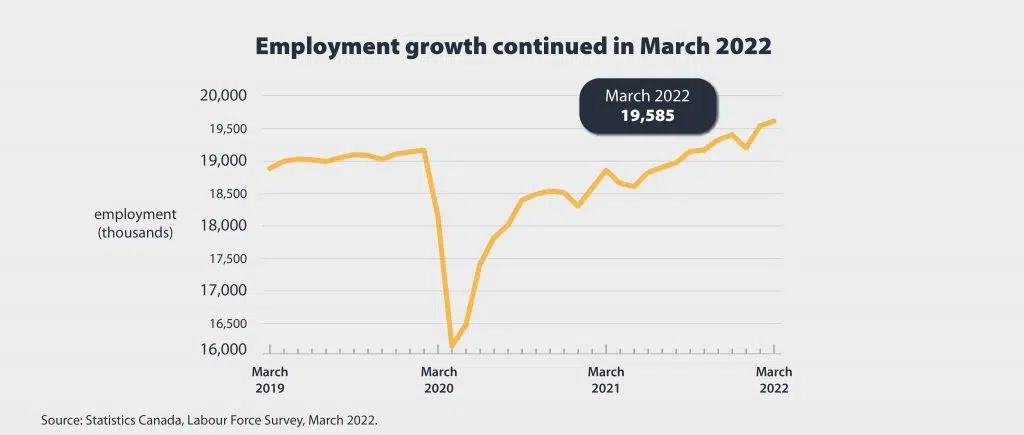Canada’s unemployment rate has fallen to a record low of 5.3 per cent, according to Statistics Canada.
The agency said Friday the economy added 73,000 jobs in March, driven by an increase of 93,000 in full-time work.
Its latest labour force survey showed the gains were concentrated in Ontario and Quebec. New Brunswick and Prince Edward Island also reported growth in their employment levels.
Newfoundland and Labrador, Saskatchewan, and Manitoba saw declines, while there was little change in Nova Scotia, Alberta, and British Columbia.
“Employment gains were driven by women aged 55 and older and men aged 25 to 54. Employment increased in both the goods- and services-producing sectors,” said the report.
The rise in the services-producing sector was spread across accommodation and food services, “other services” — which includes repair and maintenance services and personal care services — and public administration.
In the goods-producing sector, gains were driven by construction, natural resources, and agriculture.
Employment in the agriculture industry also increased for the first time since November 2020.
In New Brunswick, employment increased by 4,100 in March, mainly in full-time work.
The province’s unemployment rate fell slightly by 0.2 percentage points to 7.7 per cent.
Saint John’s unemployment rate inched up to 7.4 per cent from 7.3 per cent, while Moncton’s dropped to 5.7 per cent from 6.1 per cent.
Nova Scotia saw its unemployment rate drop by one-tenth of a percentage point to 6.5 per cent.
Employment in the province fell by 700, but the province’s overall labour force shrank by 1,500
In Halifax, the unemployment rate fell to 5.4 per cent from 5.7 per cent the month before.
Prince Edward Island’s unemployment rate took a significant drop, down from nine per cent to 8.1 per cent.
It came as employment in the province climbed by 800, mainly in full-time work.





